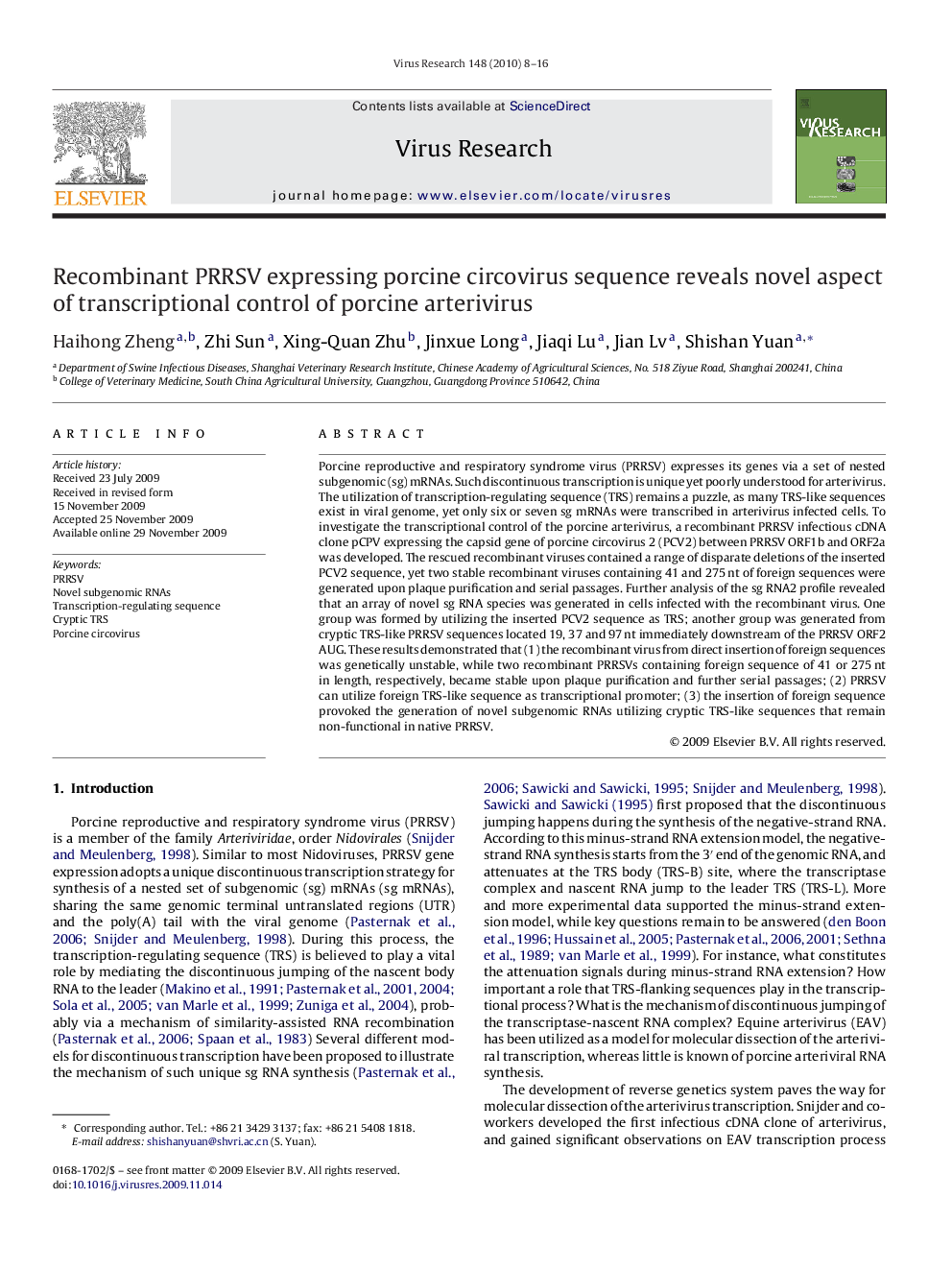| Article ID | Journal | Published Year | Pages | File Type |
|---|---|---|---|---|
| 3429807 | Virus Research | 2010 | 9 Pages |
Porcine reproductive and respiratory syndrome virus (PRRSV) expresses its genes via a set of nested subgenomic (sg) mRNAs. Such discontinuous transcription is unique yet poorly understood for arterivirus. The utilization of transcription-regulating sequence (TRS) remains a puzzle, as many TRS-like sequences exist in viral genome, yet only six or seven sg mRNAs were transcribed in arterivirus infected cells. To investigate the transcriptional control of the porcine arterivirus, a recombinant PRRSV infectious cDNA clone pCPV expressing the capsid gene of porcine circovirus 2 (PCV2) between PRRSV ORF1b and ORF2a was developed. The rescued recombinant viruses contained a range of disparate deletions of the inserted PCV2 sequence, yet two stable recombinant viruses containing 41 and 275 nt of foreign sequences were generated upon plaque purification and serial passages. Further analysis of the sg RNA2 profile revealed that an array of novel sg RNA species was generated in cells infected with the recombinant virus. One group was formed by utilizing the inserted PCV2 sequence as TRS; another group was generated from cryptic TRS-like PRRSV sequences located 19, 37 and 97 nt immediately downstream of the PRRSV ORF2 AUG. These results demonstrated that (1) the recombinant virus from direct insertion of foreign sequences was genetically unstable, while two recombinant PRRSVs containing foreign sequence of 41 or 275 nt in length, respectively, became stable upon plaque purification and further serial passages; (2) PRRSV can utilize foreign TRS-like sequence as transcriptional promoter; (3) the insertion of foreign sequence provoked the generation of novel subgenomic RNAs utilizing cryptic TRS-like sequences that remain non-functional in native PRRSV.
